This past spring, as the deciduous bonsai in my garden began to leaf out, I noticed several dwarf flowering quince began to die back. Over the next two months, about half of these chojubai died.
I found no evidence of insects or fungus, and a nearby lab couldn’t identify the culprit either. Our best guess was that last fall’s heat wave was responsible for the damage.
Fortunately, the remaining trees have been growing well. Many, like the tree below, lost the main trunkline but retained shoots that emerged from the soil.
Young chojubai
Cuts indicate where the main trunks died back
I figured that many of the roots were dead so I thought I’d repot the trees to see if cutting back the damaged roots could help them recover. Here’s the rootball after removing the mostly dead roots around the edges of the rootball.
After rootwork
Close-up of the rootball
Knowing that chojubai are commonly defoliated during repotting, I stripped off the leaves.
After removing the leaves
I then added some movement by wiring the main shoots.
After wiring the branches
Repotting complete
To get a better idea about how chojubai respond to repotting in summer after defoliation, I repotted a few more.
Chojubai after defoliation and repotting
Of course, I had to repot some without defoliating to see if removing the leaves makes a difference.
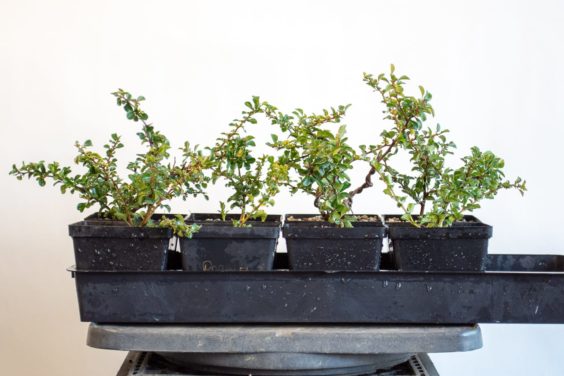
Chojubai after repotting and not defoliating
How are the trees doing? I repotted on June 12. After two weeks, lots of new leaves have appeared on the defoliated chojubai.
New foliage
Chojubai looking good two weeks after repotting
The control group is also looking good, though a number of leaves have yellowed and dropped off.
The control group
Close-up of yellow leaves
The tree that lost the most leaves
Although the control group lost a number of leaves, all are growing at the branch tips and some are beginning to form new leaves along the main shoots.
Having done similar work in the past, I expect both groups to continue growing well through the summer. If, however, I notice a hiccup along the way, I’ll be sure to post with the results.
Related Posts
Subscribe to Bonsai Tonight
New Posts Delivered Every Tuesday and Friday
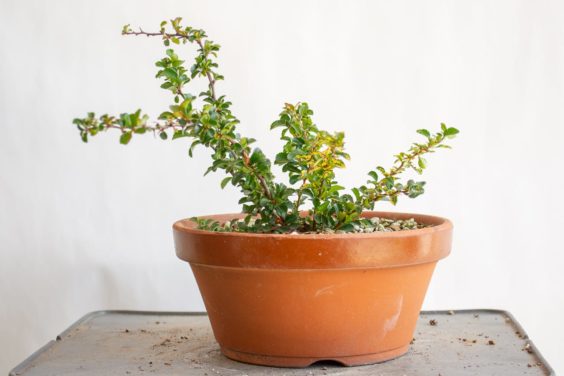
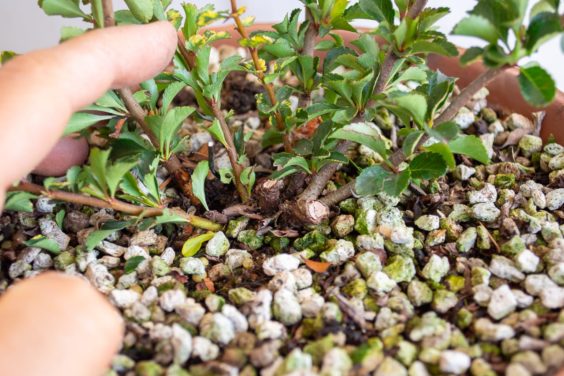
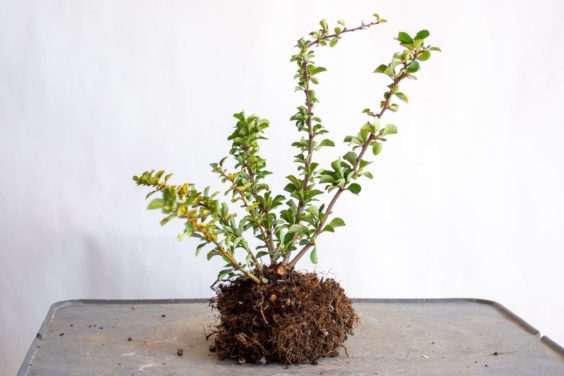
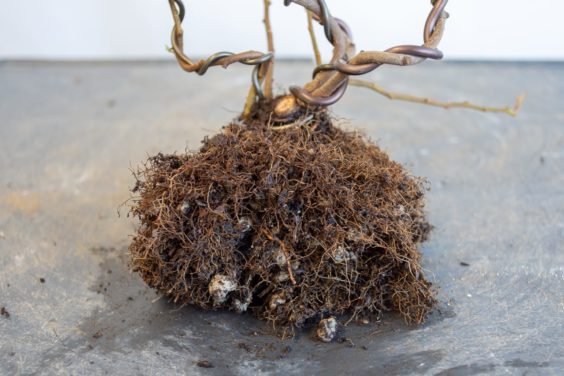
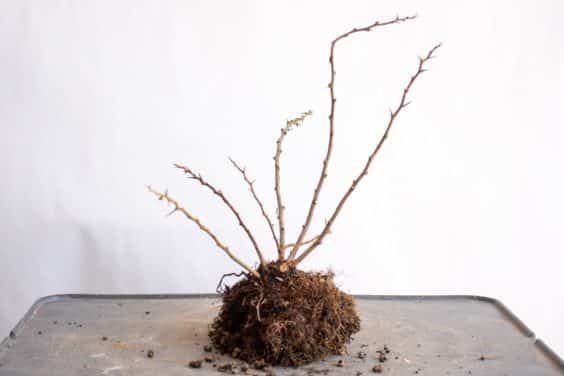
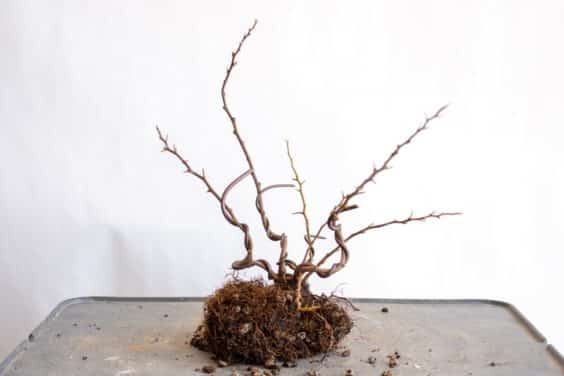
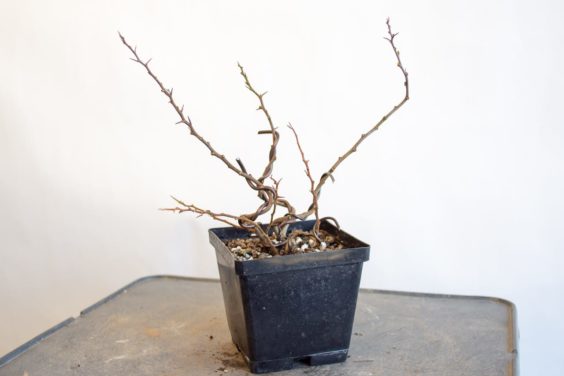
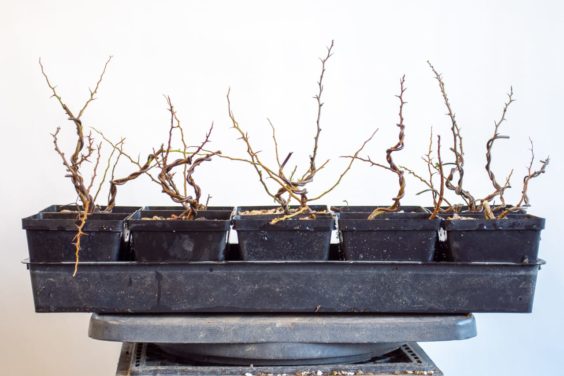
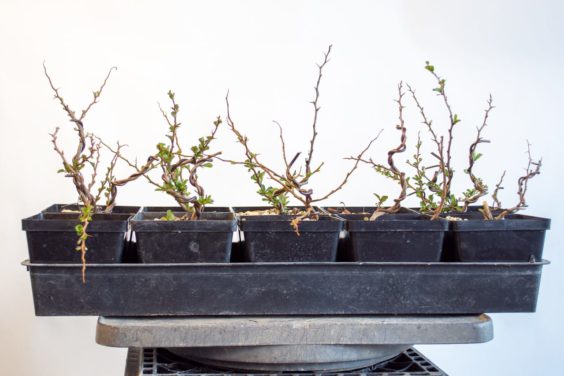
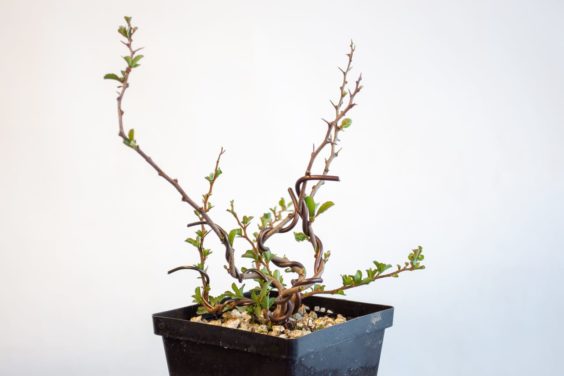
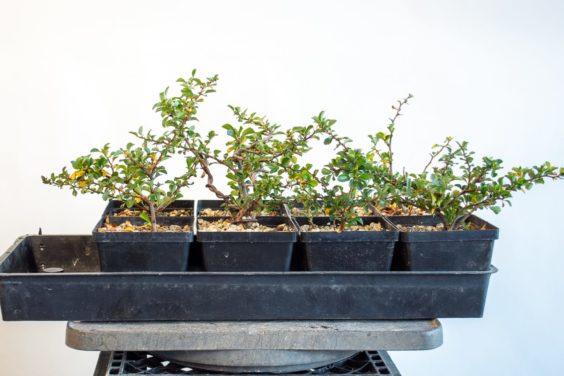
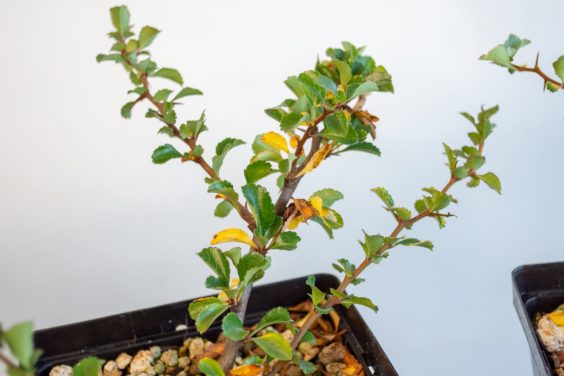
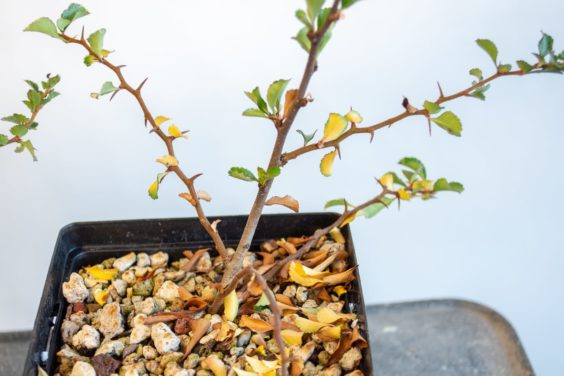
Robert says
This is interesting. Do you leave them in the shade to recover or is this why you remove all the leaves when repotting in summer? Have you repotted these in the spring? I only have regular flowering quinces. I had to perform a summer repot the other week on a one my mother brought me and she wanted her pot back, so I pulled it out, trimmed the roots to fit in a smaller pot I had on hand, potted up and placed in the shade. Its still alive but struggling. I expect it to recover. Just very slow. I should have tried removing the leaves. I am misting several times a day.
Jonas Dupuich says
Good question Robert – the trees are under 30% shade cloth, the same they were growing under before. I think the defoliated trees would be growing even faster were they in the sun.
I usually repot quince in fall, though I have repotted some in early spring. I expecting misting will help – the main thing is to avoid over-watering so the tree doesn’t stay too wet.